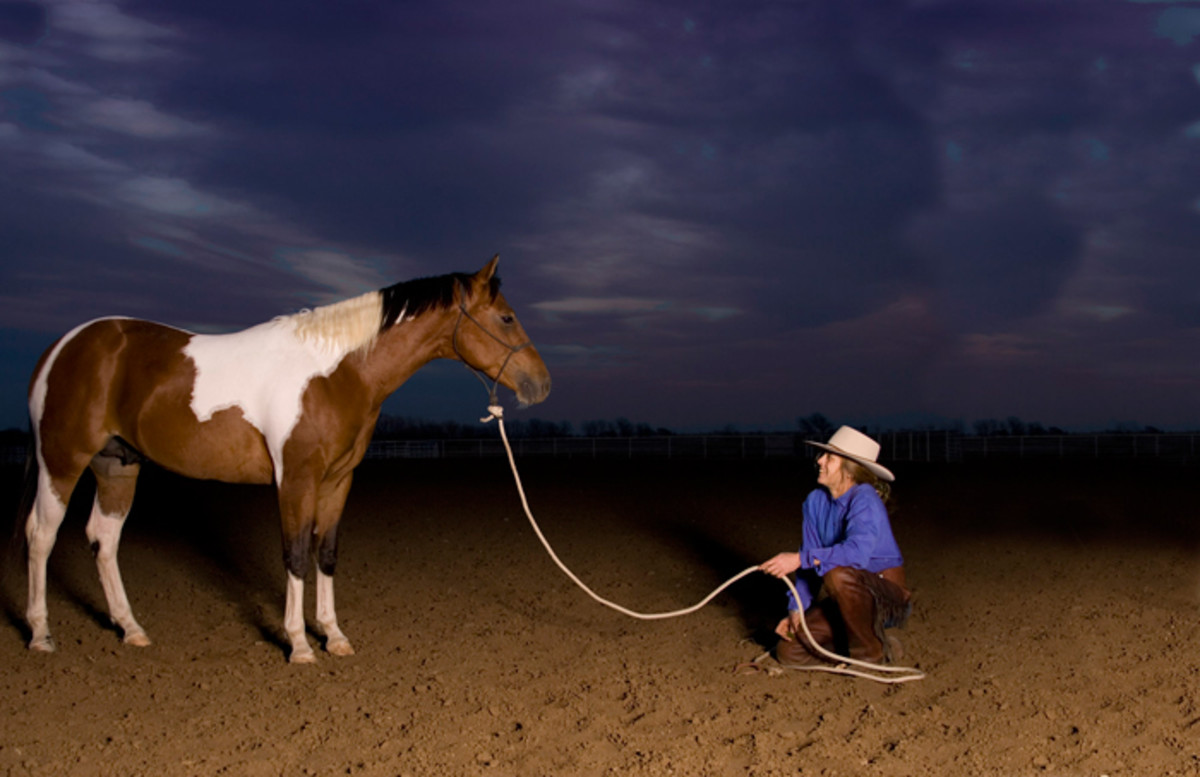“What I’d like to know is, When did the horse declare war on the human?“
Huh?
The speaker was clinician and author Leslie Desmond, and she now had my full attention. I was interviewing her for a 2006 Horse&Riderprofile, and much of what she had to say was provocative. In this case, she was referring to the widely accepted training method of demanding total submission from a horse.
She didn’t like it.
“Horses are easy to dominate,” she explained, “but that’s no reason to do it.”
Well, what then, instead?
Something she called collaboration.
“It’s like the difference between a loving, supportive parent, and a detached, demanding parent.”
I thought of my own daughter, and the analogy resonated with me. Leslie went on to claim that you can, in fact, continue to love your horse as you train him.
“A horse needs to respect you, yes,” she conceded. “But fear-based respect is a dictatorship.”

A trim, compact woman with a ready smile, Leslie is passionate about her mission to teach people how to “ask and educate” their horses, rather than “tell and intimidate.” She’s been sharing that message for over 45 years in the United States and abroad. Her mentor was the late Bill Dorrance, brother of Tom Dorrance; with him she co-authored the book True Horsemanship Through Feel.
For Leslie, not even the fundamental concept of making the right thing easy and the wrong thing difficult, a natural-horsemanship basic, goes far enough to help the horse.
“You need to make the right thing obvious,” she said. “The burden should be on the horseman to make things clear for the horse in the gentlest way possible, not on the horse to figure things out by trial-and-error.”
Earlier, I had watched her present a clinic and was fascinated by how she maneuvered a horse on the ground.
“Move him off the space you want by focusing your attention on it?by claiming it, in other words,” she explained. She then stepped a horse to the side simply by telegraphing her intent, via gaze and body language, to take control of that space.
Her analogy for it made sense, too.
“Think about what happens when you’re driving a car?you don’t bump another driver off the piece of road you want. You indicate your intent, then wait for the space to become available.
“Similarly, with a horse, make a clear request, then wait for his response.”
Her ideas are unorthodox in many ways, and a bit too touchy-feely for some people. But if you want your horse to enjoy the time you spend together as much as you do, she offers a lot of food for thought.







